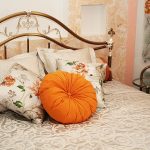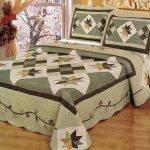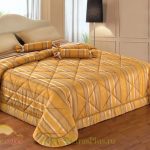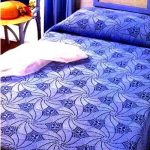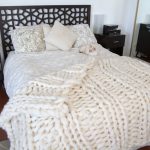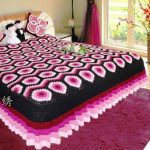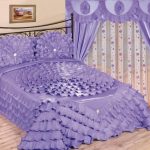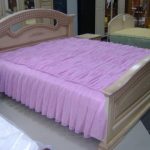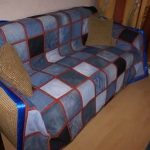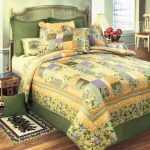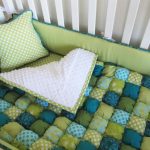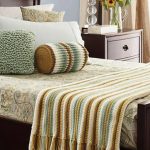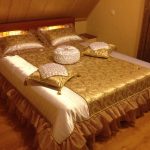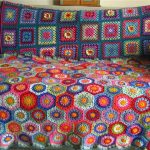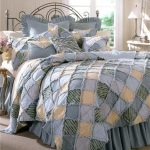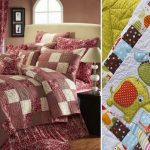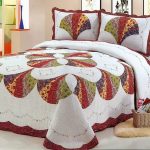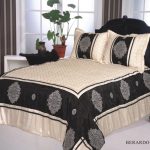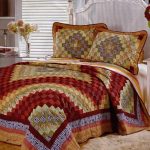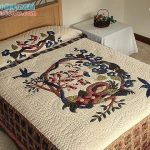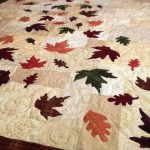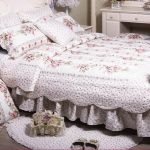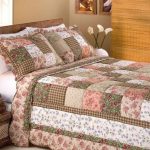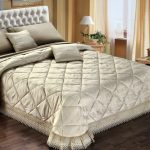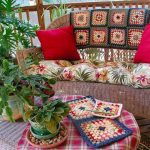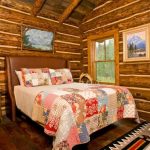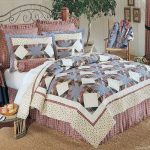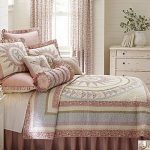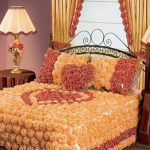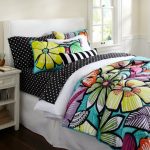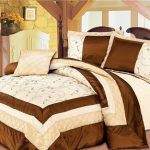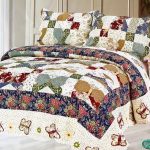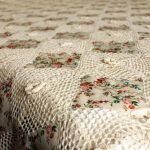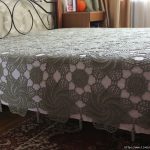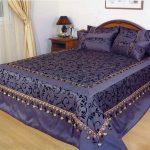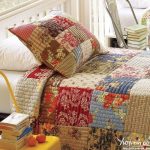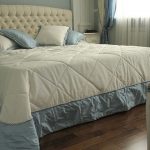How to sew a beautiful and comfortable bedspread with your own hands
The interior of the bedroom should not only have to sleep, but to please the eye during the daytime. How to achieve this? Thoroughly approach the issue of bedroom decor. The primary role here is played by the choice of textiles.
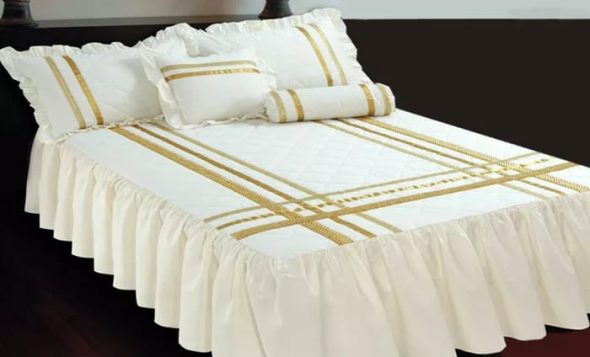
The white blanket will be the perfect complement to any interior!
The most important place in the bedroom is the bed, which means that its decor will attract maximum attention. How to make the bed attractive? Put on her an interesting bedspread.
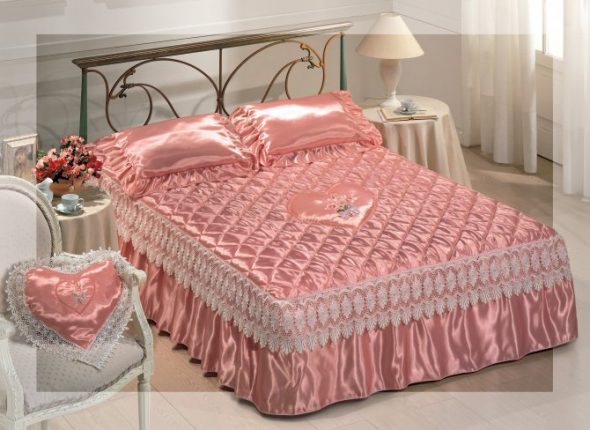
A self-made bedspread will fill the bedroom with comfort and warmth.
It is difficult to find in the stores that cover that you immediately like, naturally fit into the interior of the room, will perform the necessary functions. Order tailoring textile interior components in the studio is not always possible. Therefore, an excellent solution to the issue will be to sew a blanket on the bed with your own hands.
Content
We determine the model, fabric, color
Sew a blanket is not difficult if you have the initial skills of cutting and sewing. After all, any blanket uncomplicated cut - a simple rectangle of fabric.
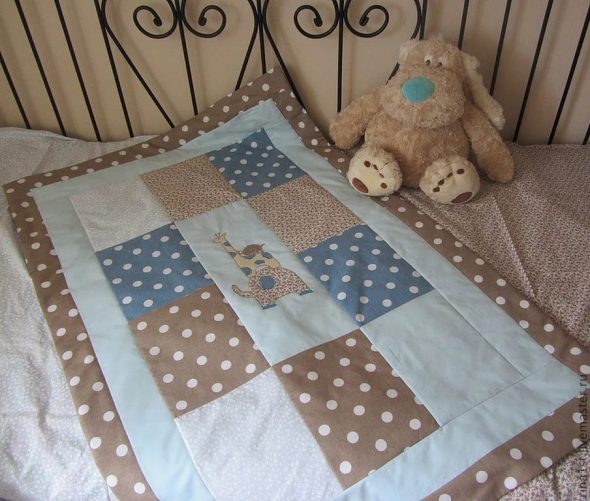
Baby bedspread should be gentle and pleasant in texture.
The usual piece of matter of the desired size must be processed in such a way as to obtain the desired result. The cover can be light, flowing, without lining or thoroughly dense, with the presence of stitches. In addition, a banal rectangle can be decorated: add a frill, ruffles, decorative stitching, make embroidery, appliqué and get a unique cover.
Bedspread should be chosen based on personal preferences, the overall style of the room, the purpose of this textile element.
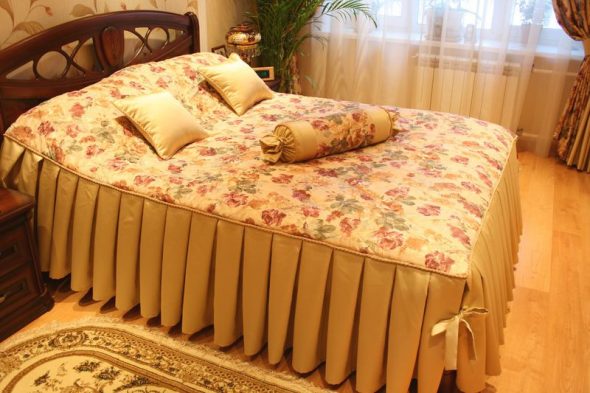
The style and design of the bedspread each chooses for themselves.
A great solution would be a double-sided bedspread. If the sides are from a single fabric, then it is extremely easy to use. There will be no need to care about which side to place it on the bed. When the pace with different patterns, it will be possible to change the appearance of the bedroom on the mood, covering the bed in different ways.

Choose the fabric that during operation will give you only comfortable sensations.
The cover decorated with various decorations (ribbons, lace, puffs, frill) will give the room incredible comfort, create a romantic atmosphere. At the same time, the abundance of textile components in the lower part performs a practical function - hides the bed frame.

Silk cover - it is stylish, fashionable and elegant!
A cover made of smooth satin, silk fabric or tapestry will bring refinement to the room. Chic, pompousness will add the use of shiny fabric, gilded finish.
The cover with thick pile, made of wool, fur will perfectly cope with the task of additional warming, will give softness, comfort to the room.
The quilted cover will protect from cold, will create a homely, well-groomed atmosphere, an atmosphere of warmth, comfort.
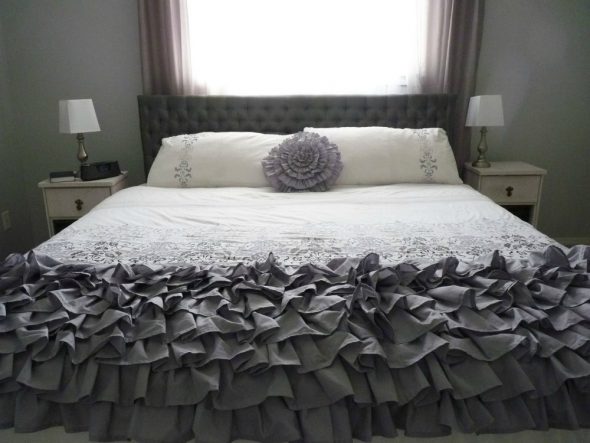
Complex models of covers will require more effort and skill from a seamstress.
TIP.A woman with minimal experience is better to choose patterns without excesses, fabrics that do not require special treatment. A fine option would be cotton, blended fabrics of medium density.
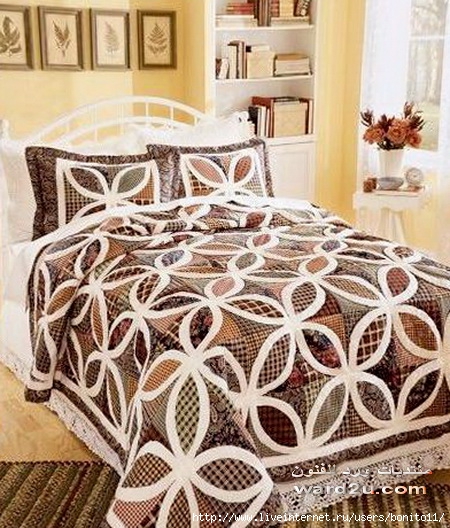
The better the fabric will be, the more pleasant the cover will be used later.
Choosing a color
The color scheme of the product must match the style of the room, but may be seasonal in nature, take into account the lighting of the room, its size.

The type of fabric for the bedspread should also be chosen on the basis of seasonality.
- The veil should not create an impression of contrast, unless it is a design trick intended. In a small room, the bed should not be a bright spot, otherwise it can make the illusion of filling the whole space. It is better to choose a beautiful bedspread similar in color to the decoration and surrounding objects.
- Illumination of the bedroom, primary and secondary colors are also important. It is preferable to dilute a gloomy situation with a warm, light palette of shades. With good lighting, the overall warmth, it is possible to show great imagination in choosing the color of the bedspread.
- Cold shine, play are appropriate only in a large room, preferably in the summer. Otherwise, the intended chic will become an inappropriate farce.
- A variety of interior contribute to fabrics containing patterns, the use of decorative elements in the decoration of the bedspread.
- Warm colors always bring freshness and comfort. Pastel colors are able to make a visual expansion of the boundaries of the room.

Heavy bedspreads are best used in large bedrooms.
Getting ready to sew
When the choice of model, type of fabric, color is made, it is necessary to decide on what is needed in the work, and how to sew the cover on the bed with your own hands. The first thing that needs to be considered for tailoring is the fabric consumption. For this you need to make simple measurements.

Gentle color of the coverlet always makes the whole room light!
Determine the size of the bedspread.
- With the help of a measuring tape it is necessary to measure the bed in length, width, height. These measures will help to simulate the size of the future bedspread, to build a pattern.
- Using a regular tetrad sheet in a cage, make a drawing on a reduced scale. This will help to visually design the model of the bedspread. The resulting pattern is a rectangle with a side, supplemented with a frill of the desired height if necessary. Sometimes due to the location of the bed height lines are not needed. For example, in the presence of the back of the bed, or its wall location.
- When building a drawing, we take into account the fit of the fabric, the seam allowances. This will be from 3 to 5 cm. If a quilted bedspread is planned, the model displays the lines of the intended seams. This method makes it possible to adjust the unloved picture without damage to the materials and sewing process.
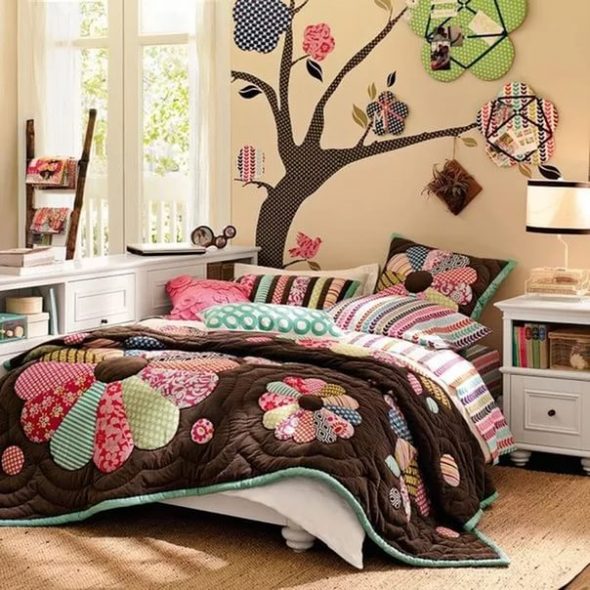
The cover with the hands will add a lot of heat and a cosiness to your room.
Calculate fabric consumption
To calculate the required amount of fabric is required to know its width. If it is 1.4 m., Then for a blanket on a double bed, you will have to cut out 2 parts of the main canvas and grind them together. This is not always permissible for the aesthetics of the finished product. Therefore, it is advisable to take care of the necessary width of the fabric in advance.
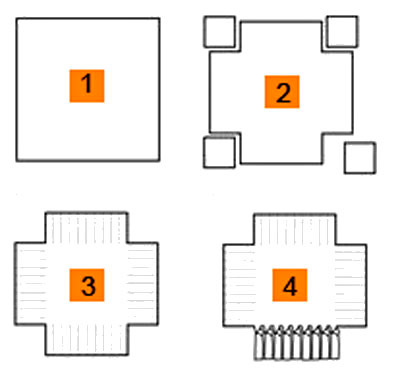
A lot depends on the choice of the initial scheme of cut, try to find the perfect one for your bed.
The fabric for the upper part of the bedspread is easy to calculate: you need to know the length, width, add a few extra centimeters to it. Fabric consumption for a frilled bedspread should be counted with folds, if they need to be laid. If they are present, the length of the strip must be additionally multiplied by 1.5
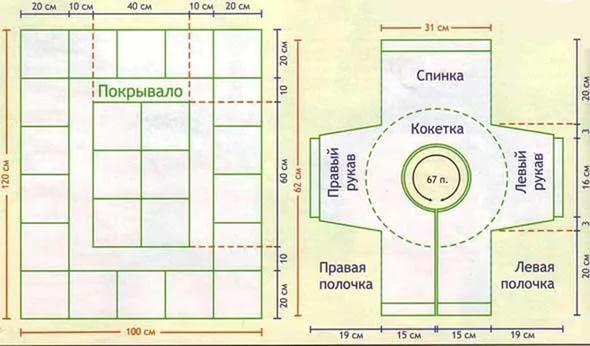
The ideal and precisely thought over pattern for a coverlet - you need only to substitute the values.
With a fabric width of 2.8 m., Most likely, 1 product length will suffice. The frills in this case should fit in the remnants of the fabric from the width. If the fabric is 1.4 m., Then it is necessary to lay 2 lengths of the main web and the total length of all sides with a frill. In this case, the consumption of fabric is significant, and the quality of the cover will suffer due to the additional seams.

Choose for sewing blankets the fabric with which it will be easier for you to work during the sewing process.
We cut and sew
Having completed the preparation of the necessary materials, we proceed to the most responsible - cutting for tailoring. The selected material directly affects the complexity of the subsequent actions. With light, sliding fabrics (silk, satin), extreme caution is needed when cutting, then sewing the product. Forming stitches will cause additional difficulties.
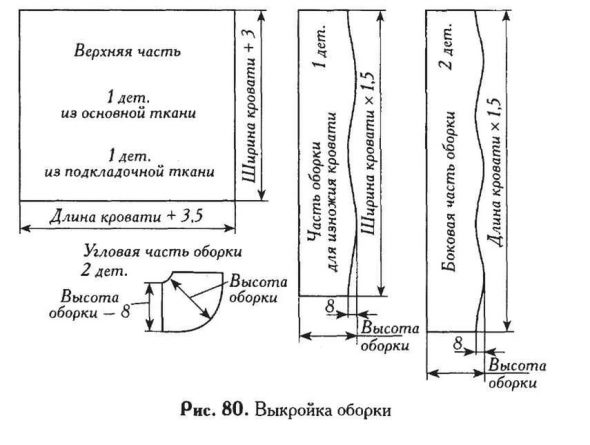
You can decorate your bedcover with a neat frill that will always add elegance to the look of your bed.
TIP. The presence of a complex pattern on the fabric requires precise adjustment of the elements in the process of cutting, sewing. Significantly facilitate the work of the choice of monophonic material.
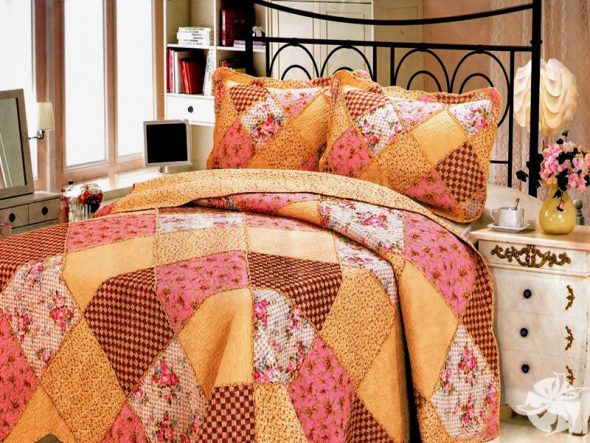
Quilts are becoming more and more popular every year.
The best way to cut is to fold the fabric in half so that the length of the main web is half along the fold line. Similarly, you can arrange the width. Then the fabric is thoroughly leveled, chopped with pins. Cut to carry out exclusively on a flat surface, to prevent the cut of materials on the weight.
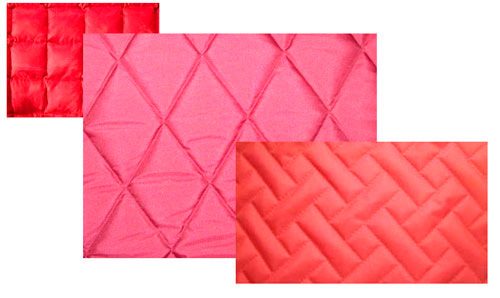
Even a quilted bedspread can look different, depending on the pattern you choose.
Frill is not necessary to do one-piece. You can use the resulting tissue residues. It is important that all typesetting strips are cut out in the same direction (along or across).

To create a patchwork bedcover, select cuts of fabric that match each other in color and texture.
If the cover implies the presence of lining fabric, they are cut out by the synthetic layer by analogy with the main details. In the process of stitching, they are joined into a whole bedspread. If there is a pattern on the fabric, it should also be considered when cutting.
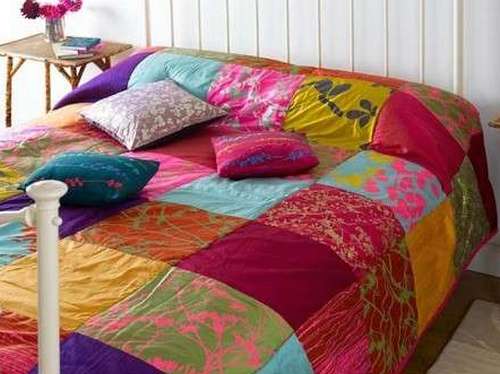
Bright bed blankets will always charge you with positive energy at bedtime.
Next comes the time Stitch all the details together. With the help of a sewing machine, we connect the base of the cover with a frill. To do this, place the parts with the wrong side up, lay the seams along the edges. Do not forget to lay the folds, if they are provided by the model. Sewing a blanket without unnecessary details is easy. In the presence of a lining, a heater it is necessary to put all layers exactly together, then sew.
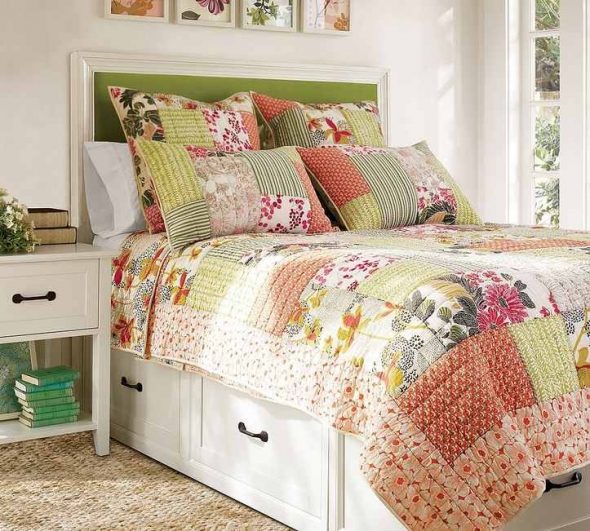
The quilt is best created from not very bright fabric cuts.
TIP. It is better to pre-break off additional parts with pins along with the main ones, or to perform manual basting seams.
If there are stitches, you must first sew its stitches, then stitch the main elements. If there is no experience, then it is better to sew stitches manually first.
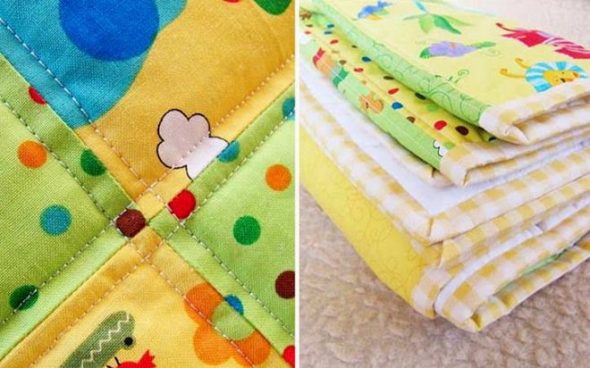
For a baby blanket you need to choose not only a pleasant color, but also high-quality natural material.
Trial option
When you do not have enough experience in sewing business, it is always scary to take responsibility for responsible work. Especially if the choice fell on complex fabrics or models of bedspreads. In this case, an excellent option would be to sew a trial version with your own hands.
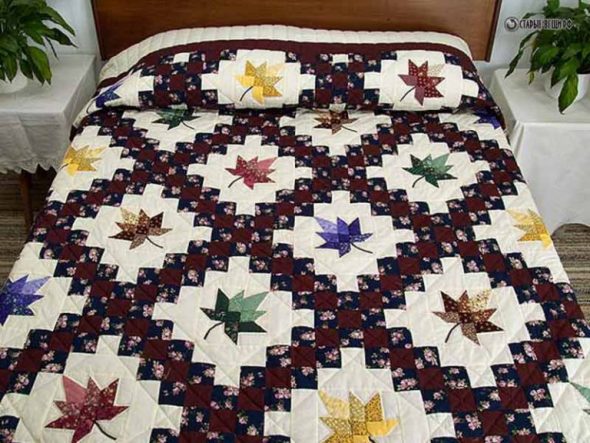
Beautiful blankets can create with their own hands each, the main thing is to recharge a large number of desire.
This is a great way to create a beautiful bedspread on the bed with simpler materials, to practice doing smooth seams, laying folds, making a line, and taking pattern into account.
TIP. A good training option would be a patchwork bedspread. This technique requires hard work, but it gives invaluable experience.

Baby bedding supplemented with toys in one theme.
Finished products can be used at the cottage, in the nursery. The skills to create a bedspread with your own hands will no doubt come in handy later. The question is how to sew a bedspread on the bed — no longer occur.
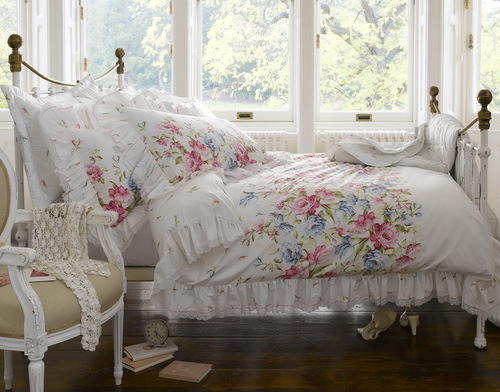
Sleeping beds can be complemented by bedspreads that come in an aqueous color scheme with bedding.
Sew a blanket with your own hands is not such a difficult task. It will take a little time, effort, skills. Exact calculation and patience guarantee a beautiful and cozy bedspread on the bed.
VIDEO: 76 unusual ideas bed covers
50 PHOTO PICTURE for creating your own bedspread:
 Adjusting the hinges on the cabinet doors by yourself
Adjusting the hinges on the cabinet doors by yourself
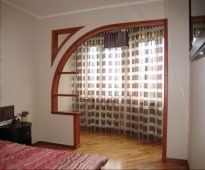 Build a drywall wall with your own hands - easy!
Build a drywall wall with your own hands - easy!
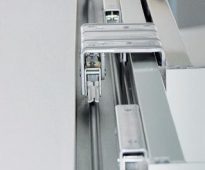 Suspension system for wardrobes: how to choose
Suspension system for wardrobes: how to choose
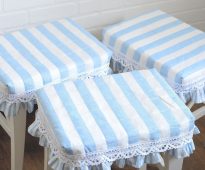 Soft covers for stools do it yourself
Soft covers for stools do it yourself
